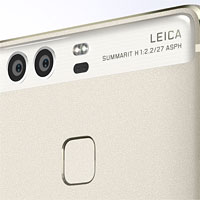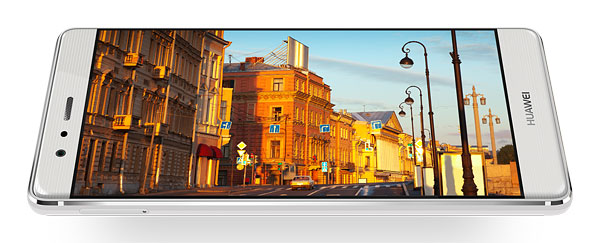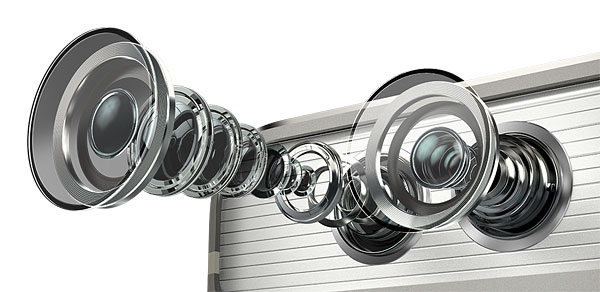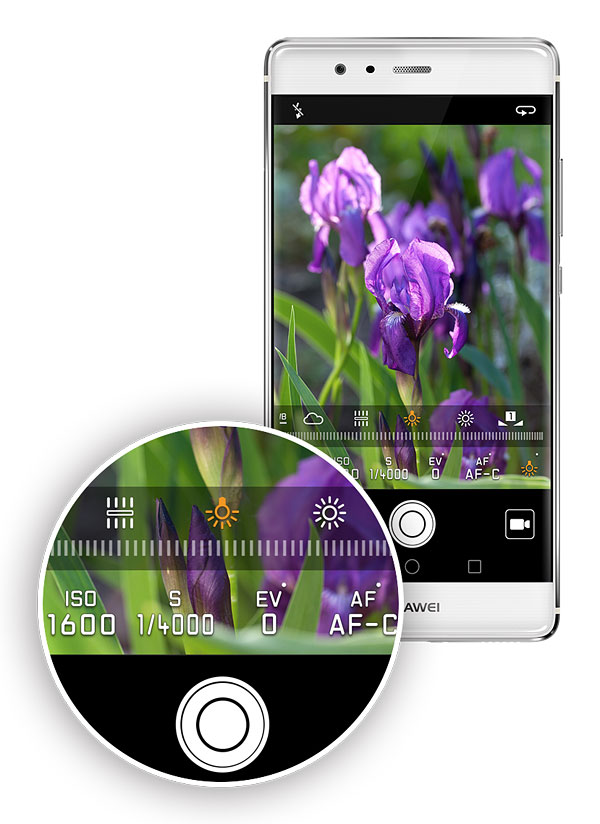Twin Leica lenses and a lust for low-light: Huawei debuts dynamic duo of P9 / P9 Plus smartphones
posted Thursday, April 7, 2016 at 7:59 AM EDT

What do you get when you mix a couple of dashes of Leica with a fast-growing smartphone developer, and add a splash of Hollywood glamor courtesy of actress Scarlett Johansson? If you're Shenzhen, China-based telecoms heavyweight Huawei, the answer would be a duo of exciting twin-Leica-lensed cameraphones which put a clear focus on photography and premium branding!
Over the last few years, Huawei -- pronounced "Hwah-way", if you didn't already know -- has grown its presence in the smartphone market at an enviable rate. As of last year, it had reached the third place in global market share, trailing only Samsung and Apple by unit sales. And as we reported recently, the company has clearly decided to redouble its efforts in a quest to catch second-placed Apple. A new partnership with German photography icon Leica sees Huawei even more strongly emphasizing the imaging capabilities of its new flagship smartphones, above all else.

Launching almost exactly one year after its previous-generation Huawei P8, which featured in interesting RGBW image sensor and an image stabilization system claimed to lead the industry, the Huawei P9 and closely-related P9 Plus also take aim at the problem of low-light photography, a traditional bugbear of the tiny-sensored smartphone. How they do so is rather interesting, though: A double-helping of Leica and Sony magic.
Both the Huawei P9 Plus and P9 share the same camera module and imaging capabilities, and the pair each sport not one, but two Leica lenses side-by-side on their rear face. Huawei isn't the first to use a design like this, but the way in which it takes advantage of the dual 27mm f/2.2 Leica Summarit H ASPH-branded optics is quite unusual. Each sits above a 12-megapixel Sony IMX286 image sensor, but there's a crucial difference between the two. Where one has an RGB filter as in most cameras, allowing for color image capture, the other lacks the color filter array. This means it can only record in black and white, but it also makes the image sensor much more sensitive to light. (According to Huawei, the monochrome chip can gather around 300% more light than does the color-filtered one.)

This difference can be utilized in a few different ways. Firstly, you can use the monochrome sensor to shoot black-and-white images, taking advantage of the much greater sensitivity to gain lower noise levels and faster shutter speeds. Secondly, the camera can combine information from both sensors, deriving the color from one and the luminance from the other, and in the process providing a clearer, brighter image with lower noise levels than could be gained by simply ramping up sensitivity of the color-filtered chip.
And finally, the Huawei P9 and P9 Plus can use the secondary image sensor to help build a depth map of the scene, something we've seen in other dual-lensed smartphones in the past. This allows for a pseudo-depth-of-field blur to be applied based on the depth map, providing a look more akin to an image shot with a larger-sensored camera. There's another interesting detail here, incidentally: Huawei is claiming that the P9 and P9 Plus are the world's first to include a dedicated ISP used solely for calculating the depth map, a feature which the company says will allow double the performance of a completely software-based depth calculation.

The DOF blur effect is not the only way the company aims to take advantage of the P9-series' new depth ISP, incidentally. It's apparently also used for long-range focus adjustment, as a supplement to more traditional contrast-detection autofocus. And for closer subjects where the technique might not prove so helpful, the Huawei P9 Plus and P9 both feature a laser-ranging capability, something we've also seen on certain rival phones in the last couple of years.
Both P9-series phones share the same 64-bit, octa-core Huawei Kirin 955 system-on-chip processor. They differ in a few key ways: A choice of a 5.5-inch 1080p display, 4GB of RAM and 3,400mAh battery for the P9 Plus, or a 5.2-inch 1080p display, 3GB of RAM and a 3,000mAh battery for the P9. The P9 Plus also has a better eight-megapixel front selfie camera with autofocus, a press-touch system akin to Apple's Force Touch, improved speakers and an IR transmitter. 32GB and 64GB storage options are available along with Micro SD card slots in both phones, and each ships with Android 6.0 Marshmallow.
US-market pricing and availability for the duo have yet to be announced, but in the United Kingdom, pricing is set at £549 for the P9 Plus, or £449 for the P9. At current exchange rates -- and ignoring taxes and duties -- that's in the region of US$770 for the P9 Plus, and US$630 for the P9. The Huawei P9 will be first to ship later this month, with the Huawei P9 Plus following in May 2016.